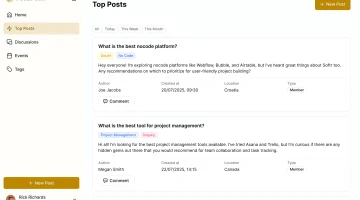
The Importance of Customer Feedback in Business
Customer feedback provides invaluable information and opinions – both positive and negative – which help companies achieve their business and marketing goals.
Market research and buyer personas are vital, but nothing beats getting direct input from your customers themselves. Listening to what people want can set you apart from competitors and ensure you provide products they’ll buy.
Customer Satisfaction
Customer Satisfaction (CSAT) measures how well your brand meets customer expectations and has an indirect effect on revenue and profit, making it crucial that businesses understand how to calculate customer satisfaction and monitor it over time.
Customer feedback can help identify areas in which your company needs to improve, such as offering more efficient shipping or support options. While such feedback can be hard to measure, it’s crucial that customer experience initiatives lead to higher CSAT.
Customer satisfaction is a critical measure of consumer loyalty to any business and can indicate their likelihood of returning and spending more money with you, or recommending your products and services to friends and family. To meet customer expectations effectively, regularly collect and analyze feedback by means such as post-purchase evaluations or continuous survey programs.
Customer Loyalty
Feedback from customers can help businesses develop a more loyal customer base, but that alone doesn’t guarantee business growth or success. Loyalty should only be seen as part of an overall picture that encompasses many other elements that contribute to overall business expansion and success.
Customers who are loyal to a brand will share their positive experiences with it by spreading the word to others and becoming referrals – effectively cutting marketing costs in half!
Loyal customers purchase more often and are likely to make repeat purchases. They also show greater receptiveness toward customer service – 83% of people agree they feel more loyal towards companies that respond and resolve complaints quickly and satisfactorily. It is therefore crucial that businesses actively solicit customer feedback and implement changes or offers designed to encourage loyalty from their customer base, as well as tracking performance metrics like social listening or heat maps on their websites in order to see the return on their efforts. This can be accomplished via customer surveys, social listening or heat maps on their websites among other ways.
Customer Retention
Businesses that prioritize customer satisfaction and loyalty can increase their retention rate, which ultimately translates into lower customer acquisition costs, greater lifetime value retention rates, and an increase in revenue generation. They may even gain market share over competitors who do not employ retention strategies as successfully.
While market and buyer persona research can be invaluable for business insight, nothing beats hearing directly from customers themselves. Thus, it is crucial that business listens closely to feedback regularly.
Feedback, both positive and negative, from customers is invaluable to understanding your audience. Utilizing this data will enable you to customize products to meet customer needs and expectations more effectively – thus increasing retention over time. Furthermore, feedback helps identify causes of customer churn; for instance if customers express discontent with customer service processes; this allows for swifter resolution times.
Product Development
Product development involves developing innovative products that address customer problems. To accomplish this goal, businesses conduct market research, analyze customer feedback and develop unique value propositions. By following this strategy, businesses can ensure their products will be successful while gaining an edge against rival businesses.
Beginning this process often starts with an idea originating from customer or stakeholder frustrations. Once this idea has been generated, research must be conducted on it in order to ascertain current needs and design a product to satisfy them.
Once the team has determined a set of minimum functionality requirements, they can develop what is known as a Minimum Viable Product (MVP). This first prototype can then be tested with real users before tracking and acting upon results, gathering feedback directly from users and making any necessary modifications to the product via various means such as SurveySparrow’s online survey tool.





